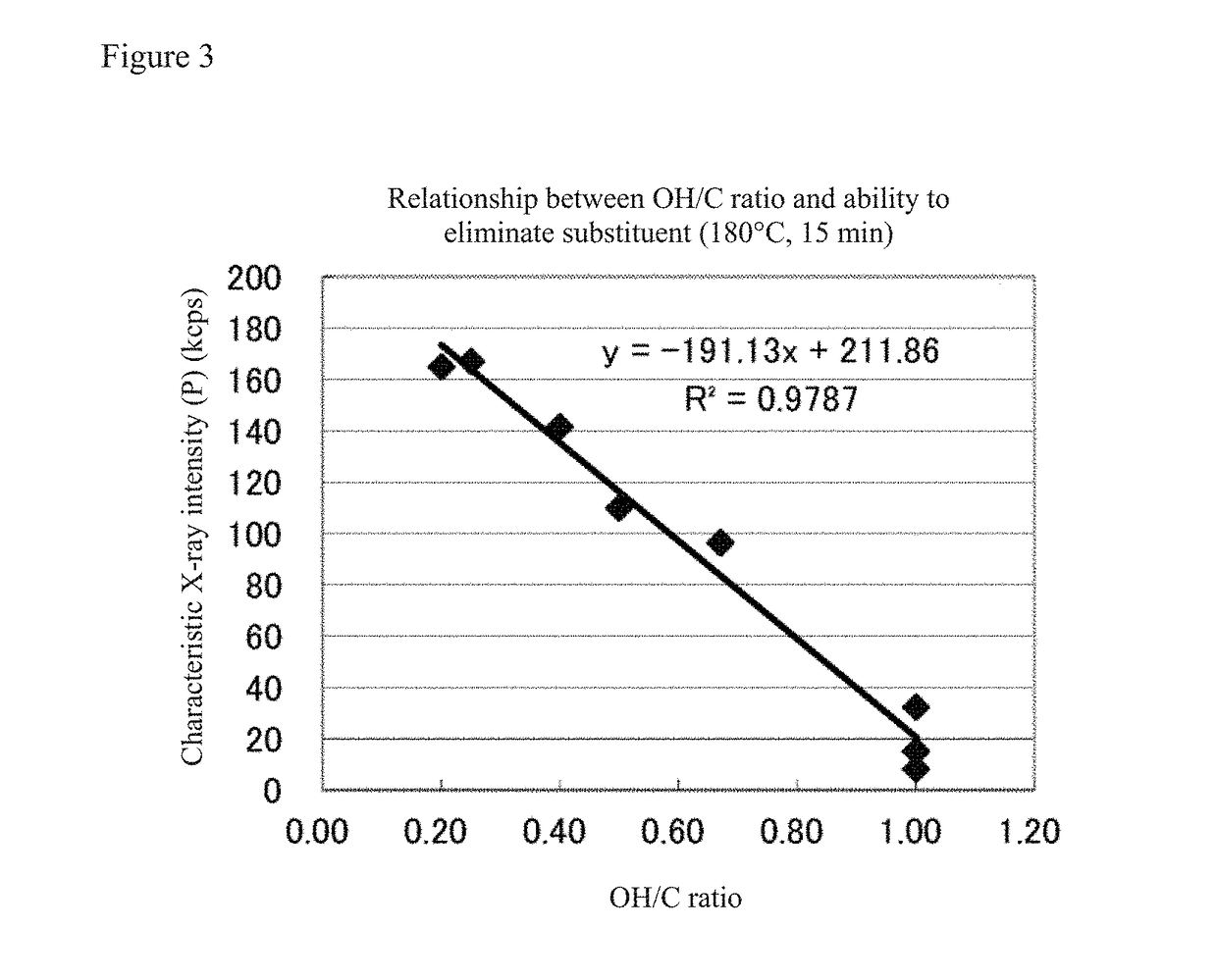Methods for producing ultrafine fiber and ultrafine fiber-containing sheet, sheet obtained thereby, and resin composite comprising laminated resins
a technology of ultrafine fiber and resin composite, which is applied in the direction of identification means, instruments, other domestic articles, etc., can solve the problems of affecting the appearance of the sheet, and the sheet itself is rarely highly transparent, and achieves the suppression of time-dependent yellowing or thermal yellowing of the ultrafine fiber-containing sheet and the resin composite, and low linear thermal expansion coefficient , the effect of efficiently eliminating the introduction of substituen
- Summary
- Abstract
- Description
- Claims
- Application Information
AI Technical Summary
Benefits of technology
Problems solved by technology
Method used
Image
Examples
example 1
[0224]1000 g (absolute dry mass) of unbeaten softwood kraft pulp (manufactured by Oji Paper Co., Ltd.) was impregnated with a chemical consisting of urea, sodium phosphate (molar ratio of a phosphorus atom and a sodium atom: Na / P=1.45), and water and compressed so that a redundant chemical was squeezed out to obtain chemical-impregnated pulp. The chemical-impregnated pulp contained 1000 g (absolute dry mass) of the pulp, 950 g of urea, 400 g (as weight of the phosphorus atom) of sodium phosphate, and 1200 g of water. The chemical-impregnated pulp was dried and heat-treated in an oven heated to 150° C. to introduce the phosphoric acid group to the pulp. 25 L of ion-exchange water was poured to the chemical-impregnated pulp after the drying and heating steps, which was then uniformly dispersed by stirring, followed by filtration and dehydration to obtain a dehydrated sheet. This step was repeated twice. Subsequently, the obtained dehydrated sheet was diluted with 25 L of ion-exchange ...
example 2
[0228]A nonwoven fabric was obtained in the same way as in Example 1 except that the solvent for the substituent elimination treatment was changed to diethylene glycol.
example 3
[0229]A nonwoven fabric was obtained in the same way as in Example 1 except that the solvent for the substituent elimination treatment was changed to propylene glycol.
PUM
| Property | Measurement | Unit |
|---|---|---|
| width | aaaaa | aaaaa |
| thickness | aaaaa | aaaaa |
| diameter | aaaaa | aaaaa |
Abstract
Description
Claims
Application Information
 Login to View More
Login to View More - R&D
- Intellectual Property
- Life Sciences
- Materials
- Tech Scout
- Unparalleled Data Quality
- Higher Quality Content
- 60% Fewer Hallucinations
Browse by: Latest US Patents, China's latest patents, Technical Efficacy Thesaurus, Application Domain, Technology Topic, Popular Technical Reports.
© 2025 PatSnap. All rights reserved.Legal|Privacy policy|Modern Slavery Act Transparency Statement|Sitemap|About US| Contact US: help@patsnap.com


